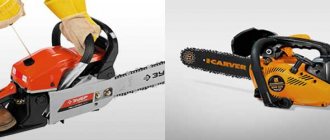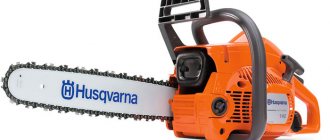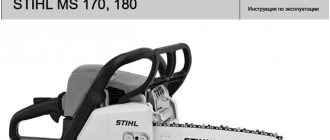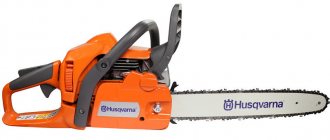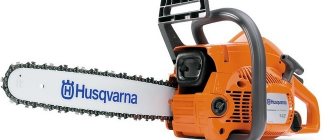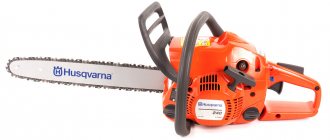Safety measures during the transportation of goods are an important condition for successful transportation. Failure to comply with special requirements may result in damage to the cargo and injury to others. The transportation of such goods is regulated by various regulations. The movement of inventory items (material assets) is carried out only on vehicles that have the appropriate carrying capacity. With increased load, the safety parameters of the machine deteriorate, which negatively affects maneuverability and controllability.
Rules for the transportation of goods by road.
Cargo and loading and unloading operations
Article 209 of the Labor Code of the Russian Federation states that working conditions are a set of factors in the working environment and the labor process that affect the performance and health of the employee. Production activity is a set of actions of workers using labor tools necessary to perform various types of work and provide various types of services.
What do workers do during loading and unloading operations? It can be represented schematically like this. They unload the transport and place the cargo for storage, place it in racks and stacks. To release goods, they are selected from storage locations, picked and packaged, moved within the storage location and from the original location to the vehicle, and loaded onto the vehicle.
On a note
According to paragraph 1.3 of GOST 12.3.009-76, loading and unloading operations are carried out in a specially designated area with a smooth and durable surface, on planned unpaved sites. They are performed mechanized using lifting and transport equipment and small-scale mechanization.
The rules are more specific. Loads weighing from 80 to 500 kg are moved using lifting equipment (hoists, blocks, winches), as well as using rollers. Manual loading and unloading of such cargo is permitted only on temporary sites under the supervision of a person responsible for the safe execution of work, and provided that the load per worker does not exceed 50 kg. Loading and unloading of cargo weighing more than 500 kg is carried out only with the help of lifting machines (clause 33 of the Rules). The Rules impose separate requirements both on unloading areas and on the methods of placing different types of cargo on them.
During loading and unloading operations, workers have to deal with a wide variety of cargo - from construction materials, process equipment and timber to liquid fuels, acids and gas.
Safe loading
The sender is responsible for loading, cargo calculation, proper distribution of cargo, and the recipient is responsible for removing the cover, the process of unloading, and cleaning the car. If necessary, all these tasks can be undertaken by a transport company, but only after agreement. Loading of cargo is carried out only after it has been calculated. To guarantee maximum safety of goods and materials during loading and unloading, the stowage must be reliable. Such work is carried out using automated equipment or manually if the mass of goods and materials is up to 50 kg. Safety requirements for the manual loading process:
- Sharp, piercing objects are carried in special cases, pencil cases;
- It is necessary to wear gloves when working with packages that have a hard surface;
- If the container of goods and materials is damaged and there are cutting objects sticking out of it, then carrying it under such conditions is prohibited;
- The glass weight is installed on special stands;
- Supports are used for the boards, this prevents them from being damaged.
Harmful and dangerous production factors
What dangers await workers engaged in loading and unloading operations? There are many of them:
- moving machines and mechanisms (vehicles, loaders, conveyors, moving parts of production equipment);
- features of transported goods;
- increased air pollution in the working area when working with mineral fertilizers, lime materials, etc.;
- increased effort when moving loads manually;
- slippery and dusty surfaces;
- toxic and irritant properties of pesticides, fertilizers, acids, alkalis, etc.;
- explosions of containers with hydrogen, acetylene, butane, alcohol, paints and varnishes, etc., fires;
- sharp objects on the surface of cargo and containers;
- falling objects (weights, containers), etc.
Some of these factors, when exposed to an employee, can cause decreased ability to work or even illness (unfavorable microclimate, increased noise levels, vibrations, poor lighting, polluted air). These are harmful production factors.
Hazardous production factors, affecting a person, can lead to occupational injuries and accidents at work, sometimes with unfavorable outcomes (height, fire, electric current, moving objects and mechanisms, explosion).
The employer's obligations to ensure safe conditions and labor protection are established by the Labor Code of the Russian Federation (Article 212 of the Labor Code of the Russian Federation). The employer is obliged to provide:
- safety of workers during the operation of buildings, structures, equipment, implementation of technological processes, as well as tools, raw materials and materials used in production;
- working conditions at each workplace that meet labor safety requirements.
In turn, the safety of loading and unloading operations is ensured by:
- selection of work methods, lifting and transport equipment and technological equipment;
- preparation and organization of work sites;
- use of protective equipment for workers;
- carrying out a medical examination of persons admitted to work and their training (clause 1.4 of GOST 12.3.009-76).
All these GOST requirements are reflected in the Rules. They are mandatory for execution by all employers - legal entities and individuals, regardless of their organizational and legal forms and forms of ownership, except for employers - individuals who are not individual entrepreneurs (clause 1 of the Rules).
How to place and secure cargo in a car?
The whole complexity of cargo transportation lies in the fact that absolutely every stage is extremely important when organizing and conducting it. None of them can be taken carelessly. You can, for example, carefully pack the cargo, mark the container in accordance with all requirements, and then somehow secure the cargo in the car/container - and either lose it in its entirety, or deliver it partially damaged. This is the best case scenario. At worst, a road accident can even result in the death of road users or their serious injuries.
Therefore, the question “How to properly secure and place the load?” certainly cannot be considered idle.
Practice of securing cargo during domestic Russian transportation
Driving through Russia itself already poses a threat: poor quality of roads, fraught with constant shaking (which, naturally, weakens fastenings and other special structures), coupled with long distances over which cargo can be delivered. That is: this load shakes longer, and the quality of its fastening is checked much less often (the driver won’t stop every 100 kilometers?!).
However, those who transport cargo from Europe to Russia do not know in words about this domestic peculiarity: the cargo can travel without displacement at all, for example, from Germany to the borders of Russia - and already a few kilometers after crossing it begin to move in different directions . Moreover, without “transferring” to another vehicle and without changing the method of attachment.
That is why, when organizing domestic Russian road freight transportation, much more attention must be paid to the quality of cargo securing. And, paradoxically, we do not focus on international standards.
If we talk about standards, then in neighboring Belarus back in 2005 they approved the “Rules for the safe placement and securing of cargo in the body of a motor vehicle.” In Russian legislation, there is no such separate document. However, there are “Rules for ensuring the safety of transportation of passengers and goods by road and urban ground electric transport” (more precisely, Chapter V and its section “Ensuring safe conditions for the transportation of goods” ) and Appendix No. 2 to the Rules - “Calculation of the number of clamping means of fastening and working loads on fastening means"
. By the way, these calculations were added to the rules by order of the Ministry of Transport only in 2016. And then the mandatory securing of cargo was established, regardless of the distance of transportation.
What is important: despite the fact that, according to Russian legislation, loading (and the list of loading operations includes securing cargo in a vehicle) is carried out by the shipper, it is the carrier who must approve the scheme for stowing and securing cargo. The scheme is approved for each transportation and for each batch of consolidated cargo.
This means that the rules for securing cargo in a vehicle or container should be known not by just one person (either the driver, or the loader, or a representative of the shipper or carrier), but by everyone involved in the organization and implementation of transportation.
By the way, the diagram of securing and placing cargo
must
necessarily include
:
- graphic representation of the position of the cargo in the body of the vehicle;
- graphical representation of cargo securing points indicating the types of securing means and their working loads.
Naturally, securing the load depends on its type, weight, and also on how full the space of the car body is. However, at the same time, there are general requirements for the location and securing of the load:
- loading must be carried out strictly in accordance with the approved scheme for securing and placing the cargo;
- Before loading, it is necessary to visually verify that there is no damage to the cargo packaging, that the body, walls, sides, and flooring of the vehicle are intact, and that the vehicle meets the requirements for securing the cargo (for example, there are a sufficient number of attachment points with a sufficient working load and etc.);
- You cannot load cargo into those vehicles (and, therefore, transport them) that have damage to the flooring and sides, faulty racks, hinges, handles of locking devices, as well as external and internal damage, ruptures, distortions of the body and awning of the onboard platform;
- you should check the availability and reliability of all necessary means and tools for securing the load;
- it is worth making sure that the cargo corresponds to the description that was given in the application for cargo transportation and which is recorded in the transport document (the overall dimensions, weight are correctly indicated, the center of gravity is marked if it does not coincide with the geometric one, etc.);
- before loading, the flooring of the onboard platform and the supporting surfaces of the cargo must be cleared of snow, ice and other contaminants that can reduce surface friction;
- it is necessary to ensure that the permissible load on the axles of the vehicle, its permissible carrying capacity are not exceeded, and also make sure that the placement of the load will not cause a shift in the center of gravity of the vehicle;
- loads should be placed so that a uniform load is ensured over the entire area of the platform;
- when loading associated cargo, it is necessary to take into account the order of their unloading and the fact that after unloading the first batches, the center of gravity may shift and the load on individual axles may increase;
- Loads with a smaller volumetric mass should be placed on cargoes with a higher volumetric mass;
- it is necessary to take into account the possibility of stacking cargo, as well as the maximum permissible number of tiers;
- the gaps between the loads, between the load and the side walls (side walls), between the load and the rear side (body door) should not exceed 15 cm;
- the free space between the loads and the walls of the body must be filled with special gaskets, containers and other devices;
- when placing long loads of different sizes, lengths and thicknesses, you should try for each individual row to select loads that are as suitable in size as possible, with those that are longer placed at the bottom, those that are shorter at the top;
- cargo that is transported in bulk or bulk must not protrude beyond the upper edges of the open body.
Risk factors, or inertial forces acting on the load during travel
To understand how difficult it is for the cargo to be transported and what danger it is exposed to along the way, you just need to imagine the amount of inertial forces
It affects him the entire time he is traveling to his destination. After all, on the road, a vehicle necessarily brakes (sometimes urgently), accelerates, turns, climbs uphill and accelerates downhill.
Thus, during emergency braking, the maximum force that puts pressure on the load and tries to move it forward can be about 80 percent of the load’s own weight. When the vehicle turns, a centrifugal force of 0.5g (about half the weight of the load) acts on the load. When starting from a stop, accelerating, or moving uphill, the load is thrown back with the same force, equal to 0.5g.
And if at this time it is not secured, then it is not difficult to imagine what can happen after just a few kilometers: a load, reinforced by inertia and the influence of other loads, will rush towards the side walls, rear or front side and sooner or later will break through it, and if not, then in any case it will be pretty damaged. However, this may well happen with a load that is secured, but not enough (maybe it will only require more kilometers traveled).
Therefore, the fastening must be such as to withstand the full force of the inertial impact and not allow the load to move even a millimeter.
There are several types of cargo securing:
- by pressing;
- stretch marks;
- blocking.
Clamping
based on an increase in friction force, which neutralizes the inertial effect. It involves the use of special tightening belts (ratchets), which, passing over the load, press it to the floor and prevent it from moving.
Obviously, with this method, the main requirements are imposed on the quality of the belts: they must, firstly
, be made of a sufficiently elastic and durable material that will not break due to tension and will not pinch the load (thereby spoiling it), and
secondly
, withstand the work load.
That is why each belt is accompanied by a special quadrangular label ( “passport”
), which contains the following important
information
, which in no case should be ignored:
- permissible working load (LC);
- the material from which the belt bands are made;
- length;
- year of issue;
- tension force (STF);
- indication of compliance with the standard.
In addition, when using fastening belts, you must not:
- turn a blind eye to even the slightest damage and abrasion;
- exceed their maximum permissible working load;
- tie them in a knot or twist them (the straps should be evenly positioned on the surface of the load, completely encircling its width);
- pull them over corners or sharp surfaces;
- lift a load using them (the straps are intended solely for fastening!).
When “pressing” one load, at least two belts must be used. If several loads are being transported (and all of them are secured in this way), then you should make sure that the vehicle is equipped with the required number of attachment points.
Naturally, the choice of belts (their number, length, permissible working load, tension force, and material) depends on the type and weight of the load. Sometimes chains or cables are also used instead of belts. True, the use of such impressive means is only possible when the cargo being transported is a heavy object made of extremely durable and resistant material.
Fastening with guy wires
is also called the “anchor” method, since it is used in maritime transport much more often than in land transport (that is, automobile). However, this does not mean that it is less effective on land.
The essence of this method is as follows: the load is fixed with special belts, chains or cables (at least four for each load), which on one side cling to the load, on the other - to the flooring and, as if tearing the load apart, balance the action of each other. friend and do not allow him to move.
The main thing that is taken into account is, again, the length of the belt, the tension force, the maximum permissible working load, and also, just as important, the angle that the belt forms with the surface of the flooring.
Obviously, the effectiveness of the securing will depend on how equally (and at the same angle) the straps are tensioned: if one of them is a little loose or a little tight, it will cause the load to shift or break one or more straps.
The use of guy ropes also presupposes the presence of special points in the vehicle for fastening, and, by the way, they can be used in completely different ways: “stretching” the load on four sides, throwing loops at its corners, ringing it along its diameter, etc. and so on.
You can calculate the angle and tensile force required for fixation using special formulas and tables. However, there are special devices (such as a calculation circle for diagonal fastening) that allow you to quickly determine how many fastening devices are needed for a load of a certain mass, what friction force they will create and what angle they will form.
When fastening by blocking
the load is placed in such a way that it is in close contact with other loads, available materials, walls and sides of the vehicle and thus cannot move. And although with this method it is extremely important that there are as small gaps between the loads as possible, in fact, in order to immobilize them, several methods are used (not just close contact).
For example, special air bags. In the deflated state, they are placed in the gaps, and then inflated with compressed air until they fill the entire air space. Air bags, by the way, are very beneficial to use: firstly
, reusable,
secondly, they do not weigh much, thirdly, only one person can handle them, and fourthly, they can withstand a load of up to 30 tons, but in no way threaten the cargo with deformation or other damage.
Empty pallets placed vertically, fixed wooden planks, inflatable pillows, panels, etc. are also used to fill voids. Locking fastening is also used when not the entire cargo space of the vehicle is used: in this case, the free space is occupied by pallets, panels, and other devices of the required size.
Load securing aids
However, when securing loads, it is extremely rare to use any one method on its own - most often it is supplemented by other auxiliary means. Such aids include:
- anti-slip mats and rubber mats
, which are placed between the base of the load and the flooring and reduce friction and the likelihood of slipping; - Chocks:
used to prevent cylindrical objects or wheeled loads from shifting; - wooden spacers:
nailed to the floor or sides of the vehicle along the perimeter of the load (either at its very base or in the middle) and block its possible movement (however, their use is limited and depends on the design of the vehicle); - nets:
cover the load and hold it either on a pallet or directly in the vehicle itself and most often replace tie-down belts if these belts themselves risk damaging the load; - shrink and stretch film:
in principle, it performs the function of packaging, but at the same time, “enveloping” the cargo on the pallet, fixes it and prevents the cargo piece assembled in this way from falling apart; - corner protectors
are special devices made of wood, plastic, light metal alloys and other materials, which, when fastened with a clamp, are placed on the corners of the load, regulate the tension force of the belts, allow them to bend around sharp surfaces, increase the service life of the belt and protect the load from cutting into it.
What determines the choice of fastening method?
The use of one or another fastening method entirely depends on the type of cargo being transported and its weight. Thus, large and/or heavy loads are most often secured with guy ropes, and lots of pallets are secured with blocking.
What is important to remember is that securing the load and its correct distribution in the body of the vehicle is mandatory in any case and must be carried out in accordance with the most stringent requirements. Otherwise, why carry the cargo if it risks either not reaching the recipient at all, or falling into his hands in an extremely tattered state?..
PS By the way, formulas for calculating the number of clamping means of fastening, the working load on them, as well as the values of the friction coefficients of various materials, etc. information are given in Appendix No. 2
to
the Rules for ensuring the safety of transportation of passengers and goods by road transport and urban ground electric transport .
Occupational Safety and Health
Labor protection is a system for preserving the life and health of workers in the process of work, which includes legal, socio-economic, organizational and technical, sanitary and hygienic, treatment and preventive, rehabilitation and other measures (Article 209 of the Labor Code of the Russian Federation). Organizational and technical activities include the development of instructions, rules, technological maps, etc. Based on the approved Rules, the employer develops labor protection instructions, which are approved by the employer’s local regulations (clause 2 of the Rules).
The rules establish the requirements:
- to production premises, organization of workplaces, operation of equipment and tools (Section II of the Rules);
- when organizing and implementing technological processes, including methods and parameters for cargo placement (Section III of the Rules);
- when working with dangerous goods (Section IV of the Rules).
Chauffeur's responsibilities
The safety of cargo transportation also lies in certain actions of the driver intended to prepare the vehicle, which include:
- Preparing the machine;
- Mandatory medical examination before travel;
- Car delivery, loading, unloading.
The driver must ensure smooth operation of the car, do not deviate from the course, do not exceed speed, and comply with all norms and safety rules for cargo transportation. Based on working time regulations, a driver should not work more than 40 hours a week. With a five-day week, the working day is 8 hours, with a six-day week – 7 hours. But for intercity communication, working hours can be increased to 12 hours. This work activity has its own characteristics:
- If transportation is carried out during one shift, the carrier company provides one driver;
- If the route is longer than 250 km, the car is served by two drivers;
- During shift cargo transportation, several vehicles are used, each of which is assigned a group of drivers.
A driver engaged in transportation by road must necessarily know the rules for transporting goods, how the mechanisms and devices that serve the vehicle work, and be able to identify and eliminate malfunctions that arise during the operation of the vehicle.
Industry standards are a priority
If individual labor protection requirements are not provided for by the Rules, one should be guided by the requirements of the relevant regulatory legal acts containing state regulatory requirements for labor protection, as well as the requirements of technical documentation of equipment and tool manufacturers. This is how paragraph 3 of the Rules is formulated.
Let's explain with an example. One of the types of rolled metal products is pipes. Types of pipes - mass: round, profile, with variable cross-sectional size, seamless, welded, etc. General rules for the placement of rolled metal (including pipes) are given in paragraph 115 of the Rules. But they are clearly not enough to work on main oil pipeline transport. The rules for placing pipes in this production are given in the “Regulations for the performance of work using pipes with a factory insulating coating: loading and unloading operations, road transportation, insulating joints, laying in a trench. Technical requirements and equipment" (see table).
Table
| Rules | Regulations |
| Requirements for the stacking area | |
| Stacking is done on pads previously laid on the floor. Placement on the floor of a warehouse or on the ground of a platform without pads is not allowed. | Storage areas must be prepared in advance and have a flat horizontal surface with a hard (concrete, asphalt) or earthen (well-compacted) surface. Slopes and other measures must be provided at the site to ensure the removal of precipitation and groundwater. Slopes for storage areas should be no more than 1.5 - 2°. |
| Stacking rules | |
| The aisles between rows of stacks or racks are at least 1 m, between stacks or racks in a row - at least 0.8 m. | Passages at least 1 m wide must be left between adjacent stacks of pipes. Prohibited: — stack pipes of different diameters and different nominal lengths in one stack; — store pipes with an external factory insulating coating together with uninsulated steel pipes. Dragging of unloaded pipes along the pipes of the first row of the stack should be completely avoided. |
| Stack formation rules | |
| Long and shaped steel products are placed in stacks, Christmas tree or rack racks, pipes are placed in stacks in rows separated by spacers. When placed in a stack or on a rack, metal square spacers with a thickness of at least 40 mm are placed between the packs and bundles to allow the slings to be released from under them and for greater stability of the placed load. The ends of the spacers should not protrude beyond the stack or rack by more than 100 mm. | The bottom row of the stack must be laid on a planned area equipped with inventory wooden pads covered with soft linings. The pipes of the lower row must be secured against lateral mixing with wedges (stops) adjusted to the diameter of the pipe. Between the rows of pipes in 3 places (at the ends and in the middle), gaskets made of rubberized fabric with a width of at least 100 mm and a thickness of at least 10 mm are laid. |
Personal and collective protective equipment
Personal and collective protective equipment for workers are technical means used to prevent or reduce the impact of harmful and (or) hazardous production factors on workers, as well as to protect against pollution (Article 209 of the Labor Code of the Russian Federation). The Rules establish that when performing loading and unloading operations, personal protective equipment should be used, taking into account the safety requirements for each specific type of work and profession (clause 4 of the Rules). These are special clothing and special footwear. If there is a danger of objects falling from above, workers must wear safety helmets of the established types (clause 6.4 of GOST 12.3.009-76). Depending on the category of goods being processed, working clothes should be washed, dry-cleaned, neutralized and other types of sanitary treatment (clause 6.2 of GOST 12.3.009-76).
Human factor
Workers at least 18 years of age who have passed a mandatory preliminary medical examination, labor safety training and testing of knowledge of safety requirements are allowed to perform loading and unloading operations and place cargo (clause 5 of the Rules). Workers who have a certificate for the right to carry out work are allowed to work using lifting machines (clause 6 of the Rules).
The Rules pay special attention to the interaction of people during the production of work. Thus, when loading and unloading operations are carried out by several workers, each of them must ensure that they do not cause injury to each other with tools or loads. When carrying loads from behind, the worker walking must maintain a distance of at least 3 m from the worker in front (clause 34 of the Rules).
The new rules introduce stricter weight lifting standards for women. Previously, it was actually permissible for women to lift weights of no more than 50 kg one time, but now this norm has been reduced to 15 kg. (Clause 32 of the Rules).
In conclusion, we note that the Labor Code of the Russian Federation, along with strict requirements for employers in the field of ensuring safe labor (Article 212 of the Labor Code of the Russian Federation), and guarantees for employees who have the right to work in conditions that meet labor protection requirements (Article 219 of the Labor Code RF), also establishes the responsibilities of the employee in the field of labor protection. In particular, each employee is obliged to comply with labor protection requirements, correctly use personal and collective protective equipment, undergo training in safe methods and techniques for performing work and providing first aid to those injured at work, immediately notify the manager of any situation that threatens the life and health of people, and undergo mandatory medical examinations (Article 214 of the Labor Code of the Russian Federation).
B.L. Swain
, for the magazine “Regulatory Acts for Accountants”
Work with personnel at the enterprise
Correctly drawn up documents will protect you from penalties from inspectors and will get you out of a conflict situation with employees. With the e-book “Working with Personnel in an Enterprise,” you will have all your documentation in perfect order. Find out more >>
If you have a question, ask it here >>
What to do in case of an accident
If an accident occurs, the driver must take the following actions:
- Do not allow unauthorized persons to approach the scene of the accident;
- Notify the traffic police;
- Call an emergency team to the scene of the incident;
- Provide first aid if there are victims;
- Eliminate the consequences;
Compliance with safety precautions when transporting any cargo will help not only preserve its integrity, but also avoid unforeseen situations that may pose a danger to nature, human life and health. It is especially important to comply with the rules when transporting dangerous goods.





